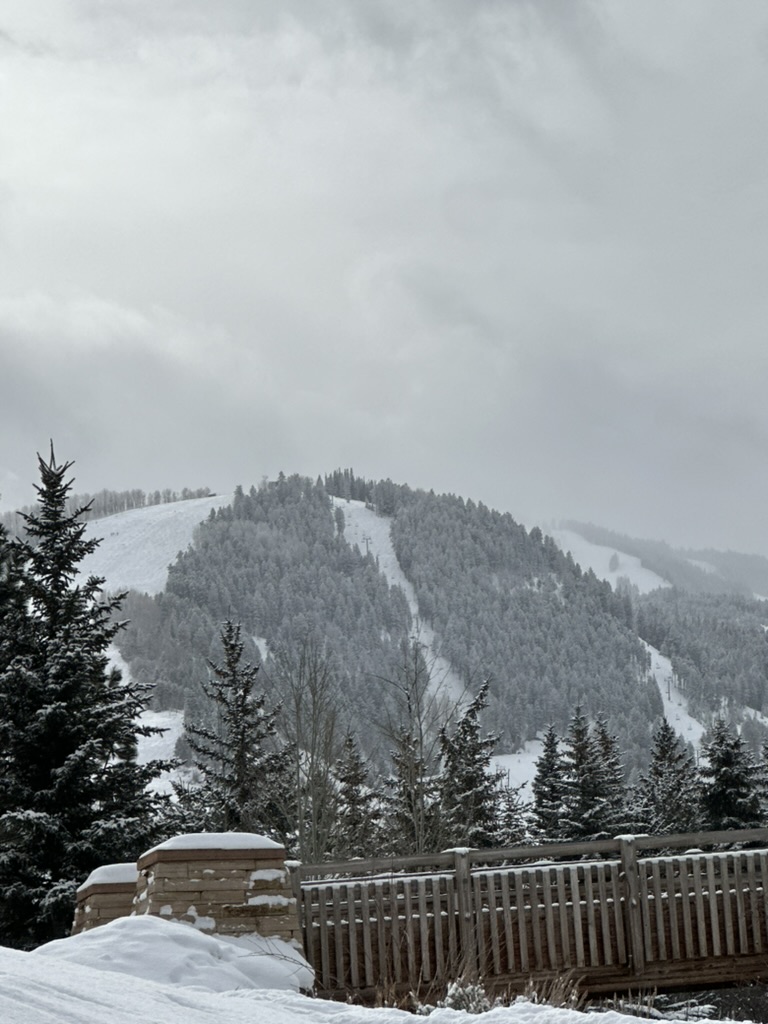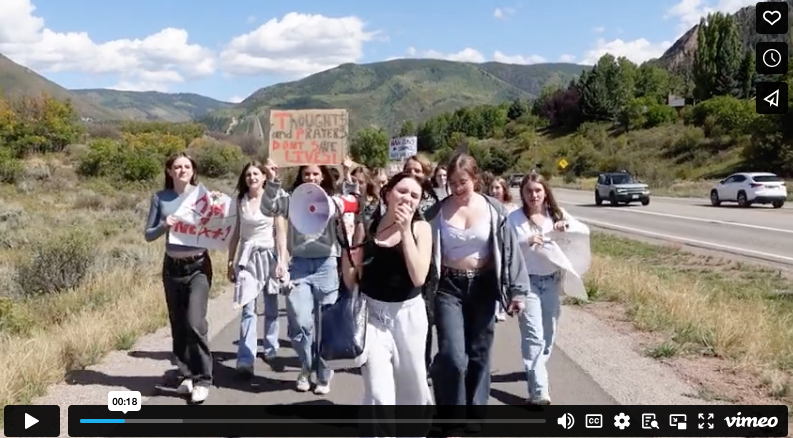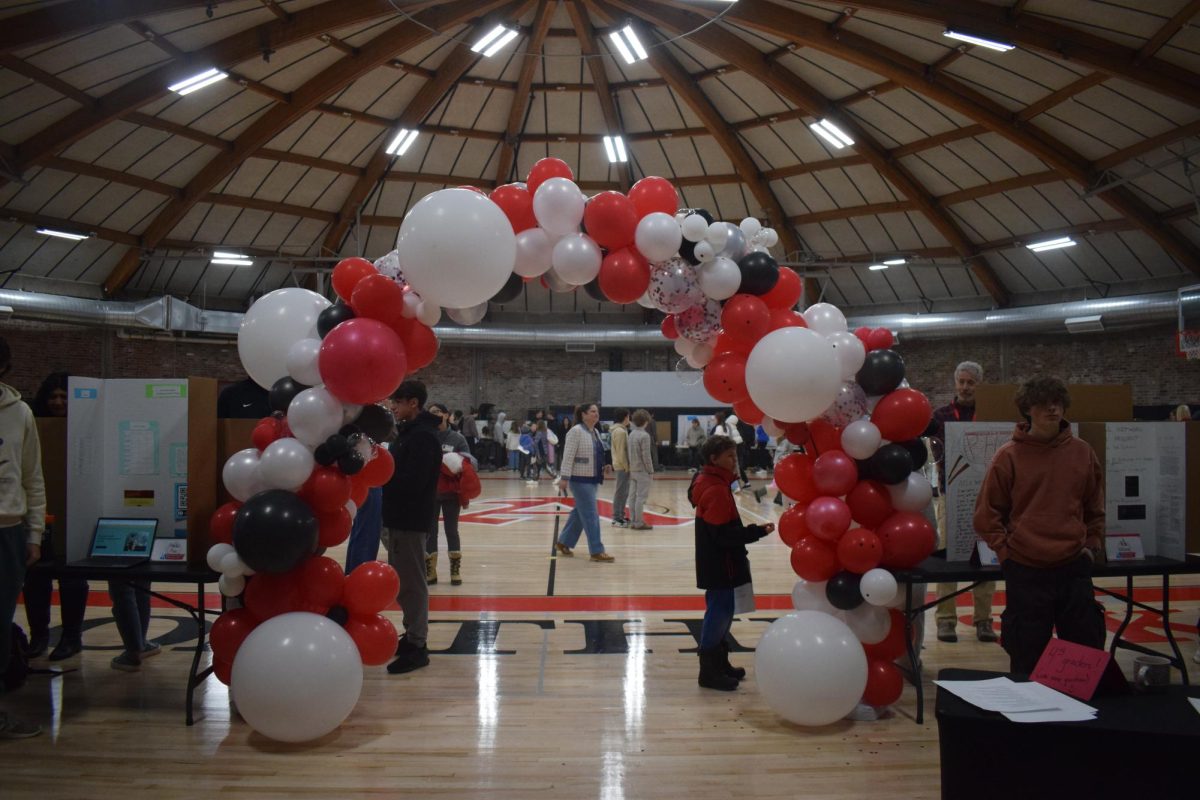Every day, thousands of skiers test their mettle on some of the steepest slopes at Vail and Aspen Highlands. Thanks to the efforts of Ski Patrol on both mountains, in-bounds avalanches are rare. However, the risk is not unknown.
It is possible for more than one out of every four slopes on Aspen Highlands to come crashing down in a lethal slab avalanche. Slopes prone to slab avalanches have a large layer of heavy, strongly bonded snow on top of a much weaker sheet of snow that can easily give way under pressure. When the weaker snow underneath gives way, the entire slope cascades as one downwards. These types of avalanches are incredibly dangerous because they are “harder to escape than a point release avalanche[,]” according to Avalanche.org. Luckily, slab avalanches require a rather steep slope to be triggered – a slope of 30° or more to be exact.
As of January 18th, 2024, avalanche danger is high. This means that slopes with angles of 30° or greater are “very likely” to trigger a persistent slab avalanche. But how many slopes are really at risk?
According to data from JollyTurns, 28.71% of Highlands runs have a slope angle within 30-45°, the range that Avalanche Canada says contains “Slopes [sic] angles on which avalanches occur… that many skiers, snowboarders, and sledders enjoy riding.” Furthermore, Avalanche Canada notes that “avalanches can happen on slopes as flat as 25 degrees and as steep as 60 degrees[,]” 40.6% of Highlands slopes an avalanche. Since most skiers go down more than two runs in a day, this means that all riders on Highlands likely ski on a slope that can avalanche. Therefore, if Aspen Highlands were not maintained by Ski Patrol, it would be “very likely” that a skier would trigger a deadly avalanche every single day.
That risk, a near-guarantee of triggering an avalanche if Highlands were unmaintained, is mitigated by Aspen Highlands Ski Patrol. According to The Aspen Times, the Highlands Ski Patrol are “some of the most elite and experienced ski patrollers in the nation[.]” On a given day, Ski Patrollers will launch grenades into Highlands Bowl to trigger avalanches, comb the mountain at closing with avalanche dogs and by ski, and take charge of numerous emergencies. The Patrol uses bombs to ensure that all possible avalanches have been triggered before a skier enters the slope (known as Avalanche Mitigation), which has helped prevent avalanche-caused deaths in the Highlands ski area. In-bounds avalanches are incredibly rare on Aspen Highlands, but they do happen; in the last ten years, there was one avalanche on the mountain. The ski patrol ensured the safety of all those caught, and there were no fatalities.
On Vail Mountain, the risk of avalanches is much lower. Only three of Vail’s 195 Trails are at angles highly susceptible to slab avalanche, and less than one in five Vail runs is likely to trigger an avalanche at all (ex. a loose-wet avalanche). In comparison, more than three out of every four slopes at Aspen Highlands is at an angle that can trigger “Infrequent wet snow avalanches and slush flows[,]” according to Avalanche Canada. Vail’s Ski Patrollers perform a similar amount of avalanche mitigation, especially in the Back Bowls, which contain a significant amount of Vail’s steeper terrain. Their work has prevented in-bounds avalanches on Vail in the last ten years; a 2012 avalanche on Vail Mountain killed a 13-year-old boy, but the terrain that slide was closed at the time for safety concerns.
What does all of this mean for safety on the mountains? On a day with heavy snow, it is safer to ski Vail than Aspen Highlands. The average Aspen Highlands slope is 21.50°, while the average Vail slope is only 14.44° steep (a difference of 7.1°). However, the work of Ski Patrol on both mountains majorly reduces danger; while three out of every four Highlands slopes can avalanche, skiers on the mountain have almost never triggered them. Vail Mountain has some runs in avalanche terrain but in fewer numbers than Aspen Highlands. Therefore, while it may be safer to ski Vail statistically, Ski Patrollers ensure that open runs on both mountains are not significantly more dangerous than others.
Statistically, How Dangerous is it to ski Vail and Aspen Highlands?
Aspen Highlands Ski Resort seen from the Aspen School District Campus.
2
1
More to Discover
About the Contributor

Owen Cruz-Abrams, Managing Editor
Owen is a senior and this will be his third year writing for the Skier Scribbler. He loves writing opinion articles.






























Dominic J. DiMaria II ~ Feb 27, 2024 at 10:55 am
Insightful. Owen, I found this article to be very intriguing and you are a very eloquent writer.
Lewis Albo ~ Feb 22, 2024 at 7:22 pm
Yeah, that’s debatable.